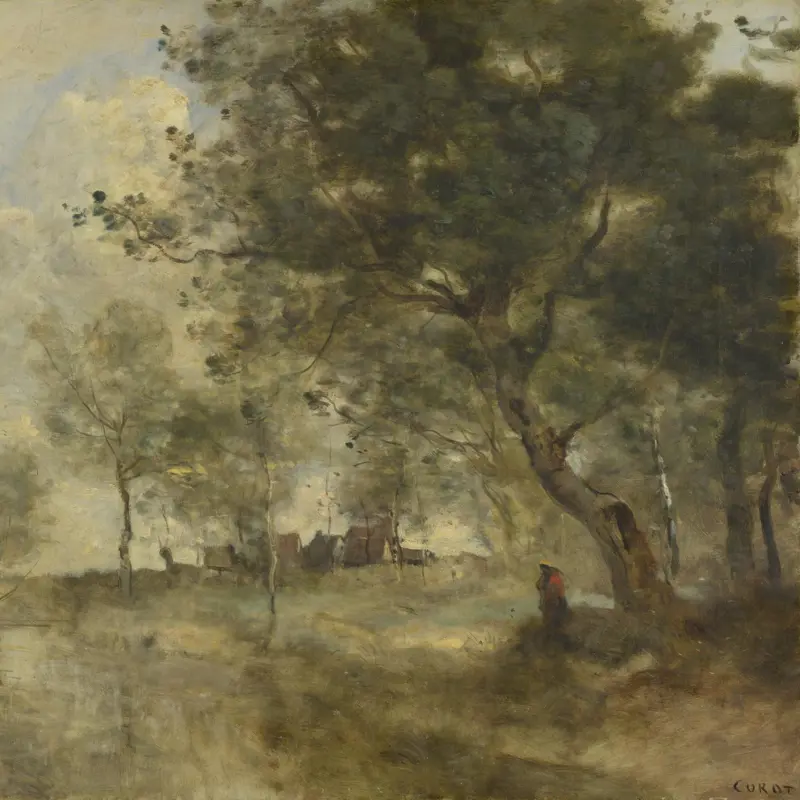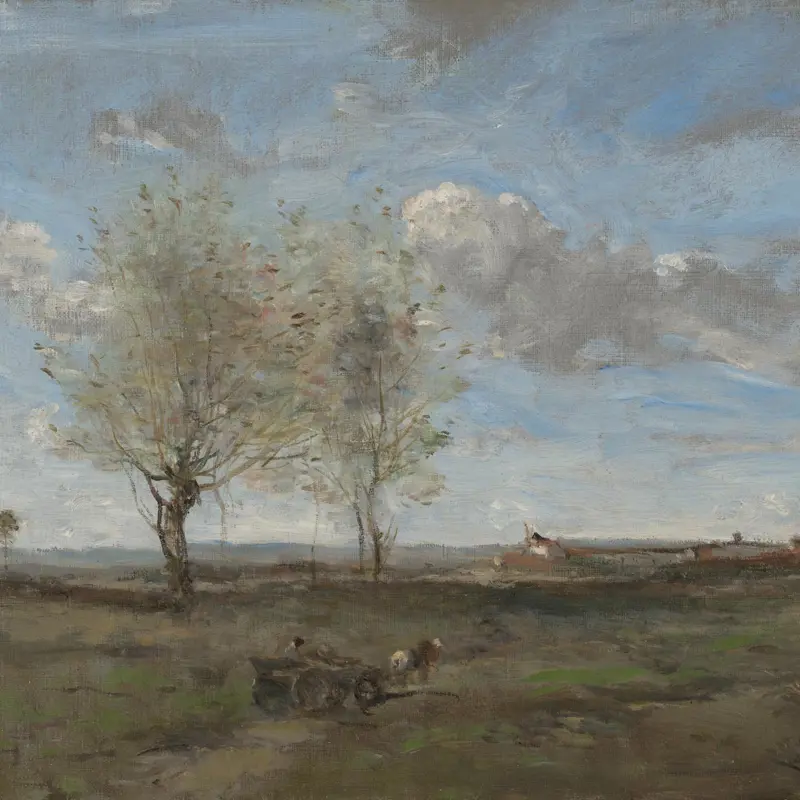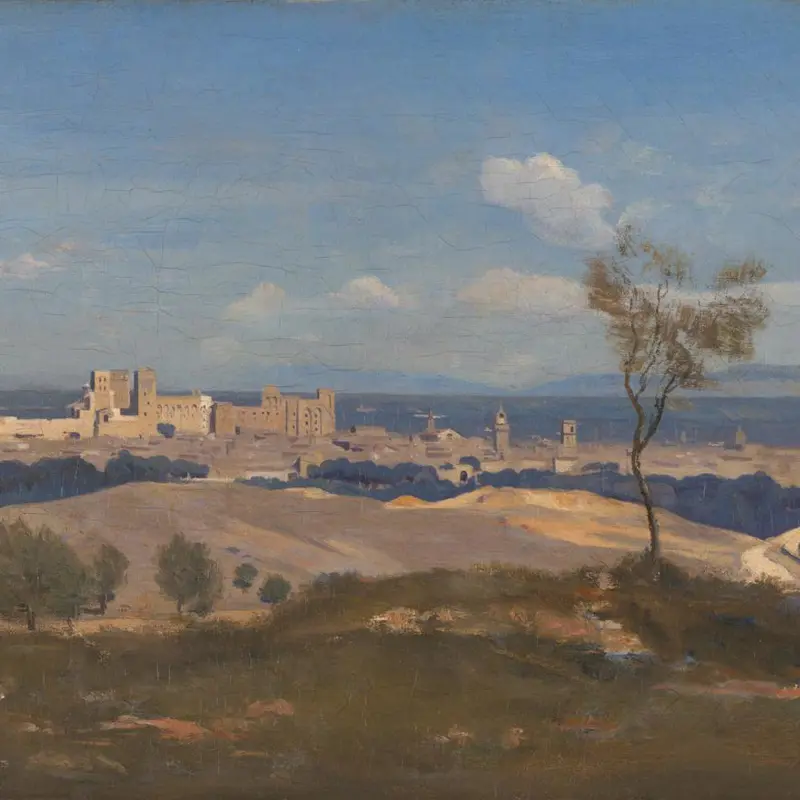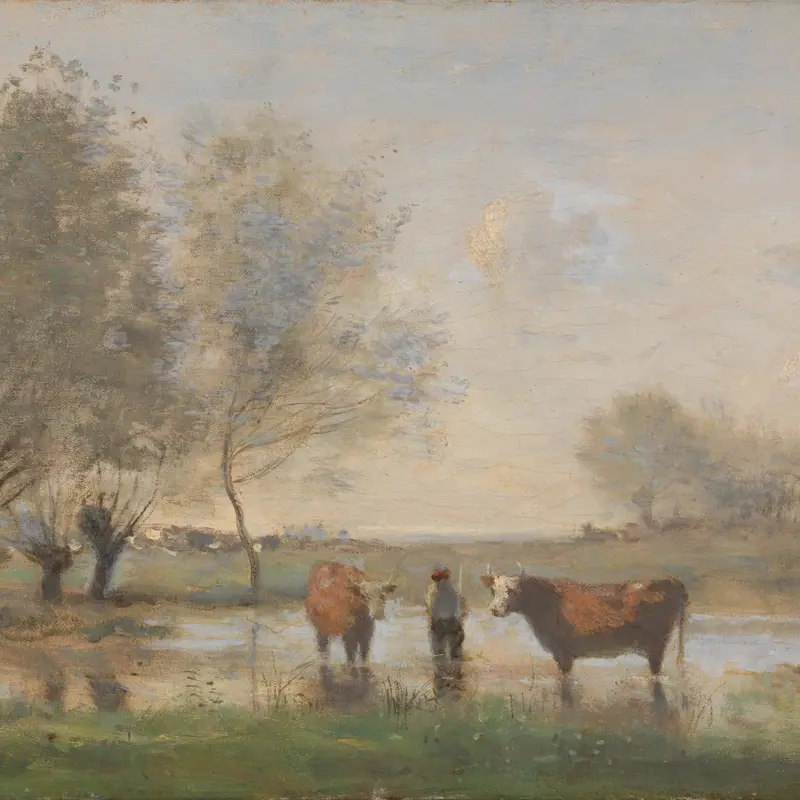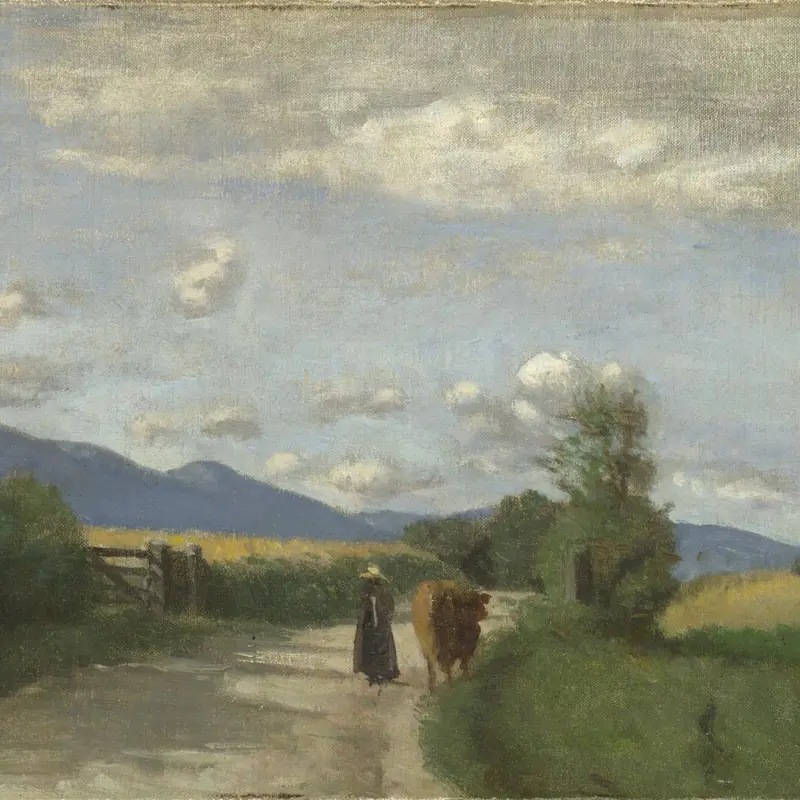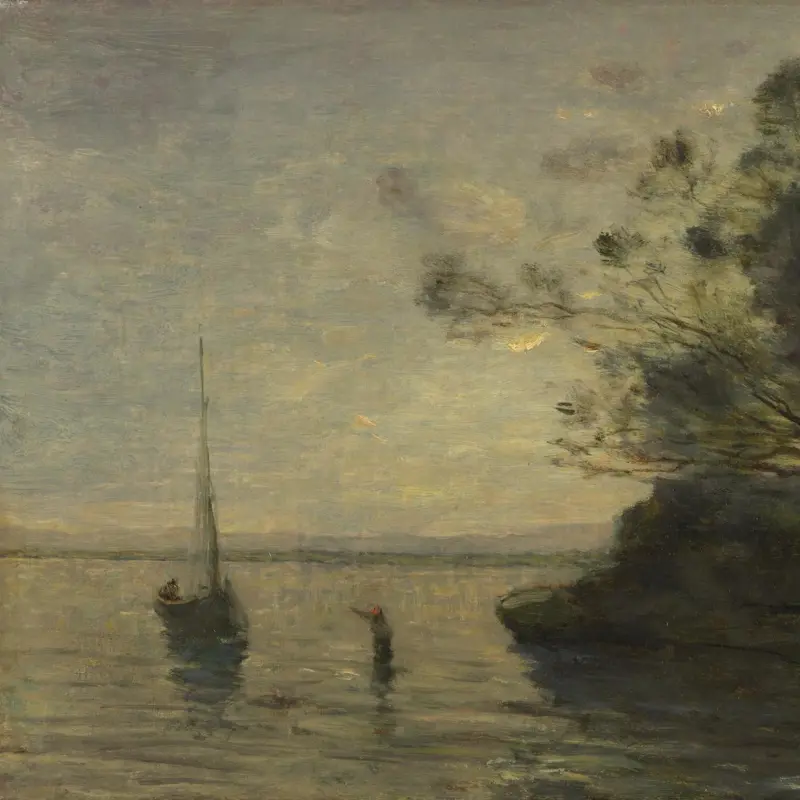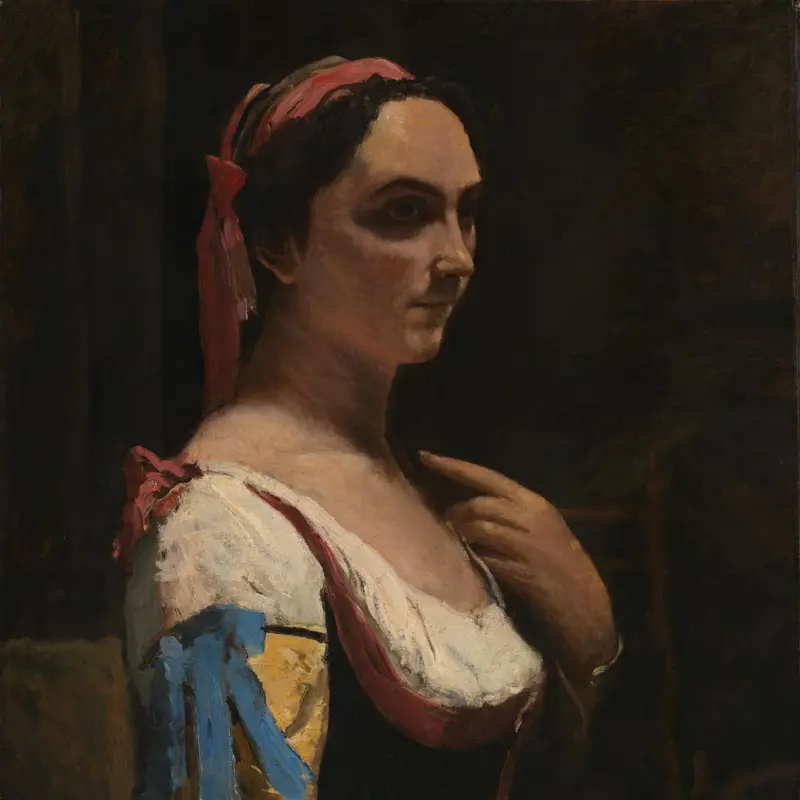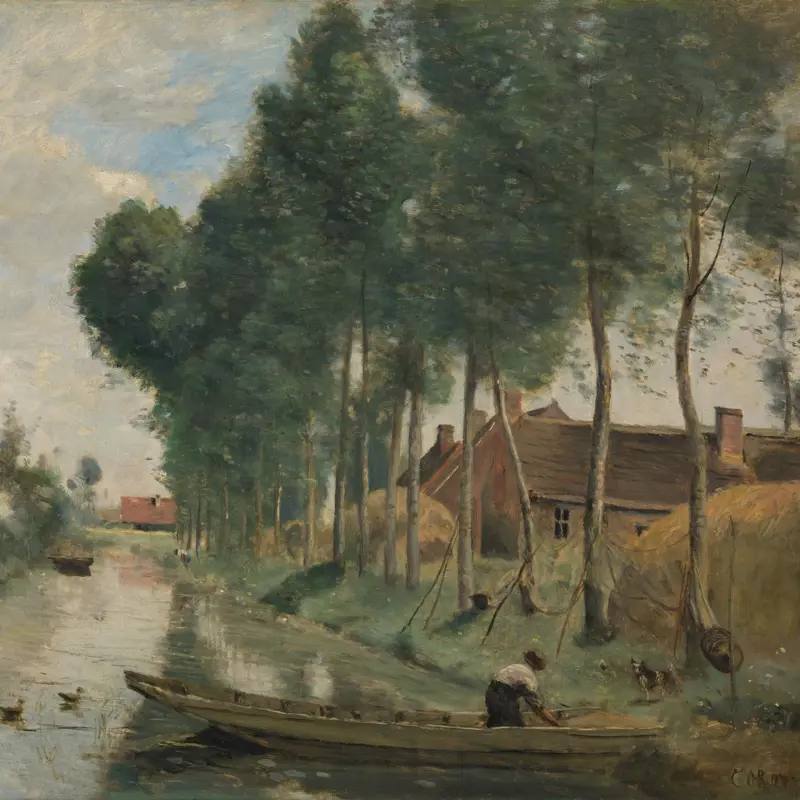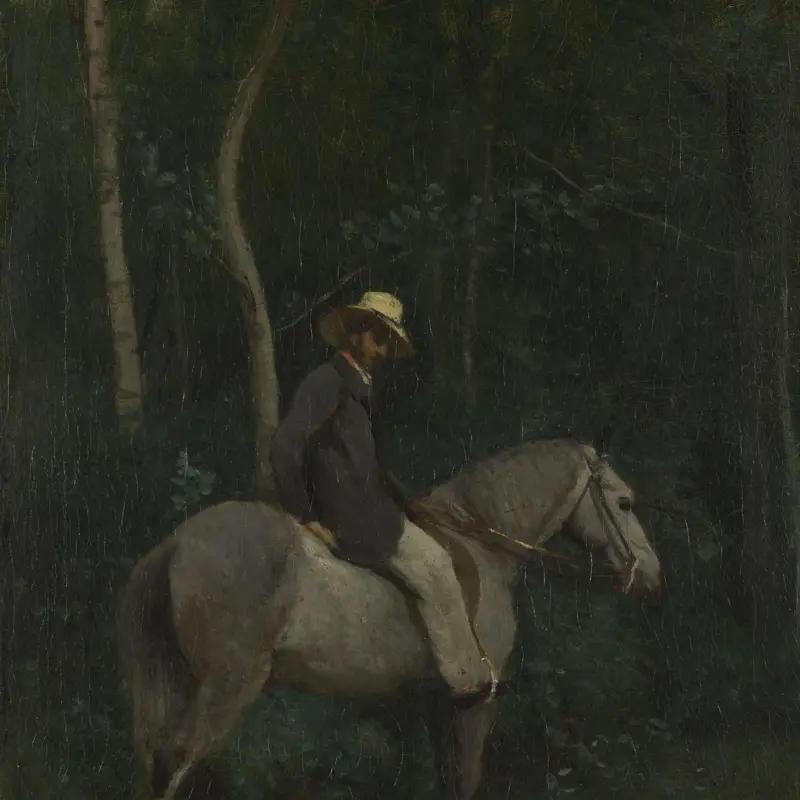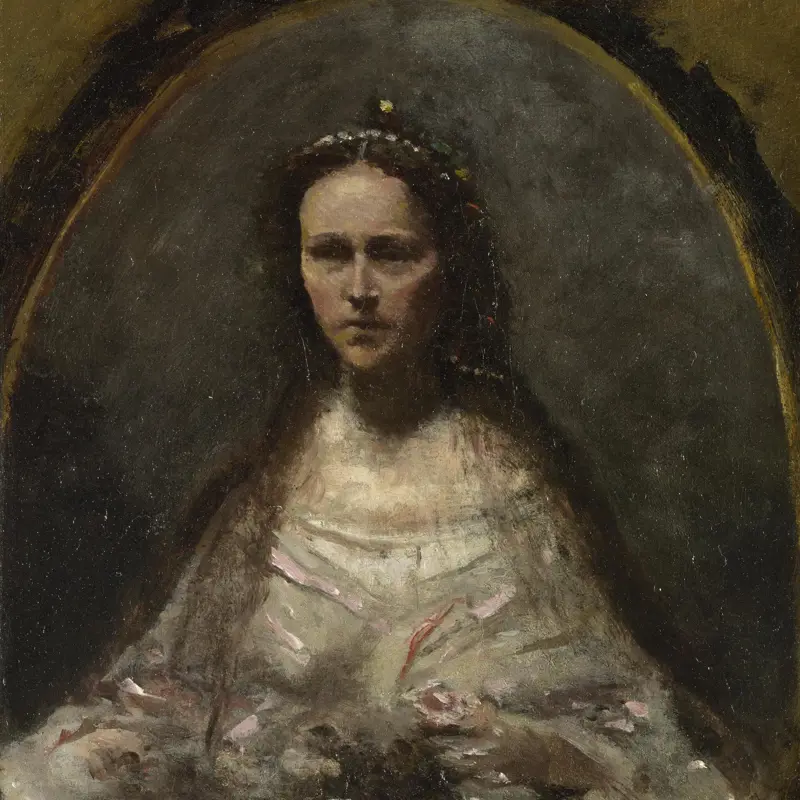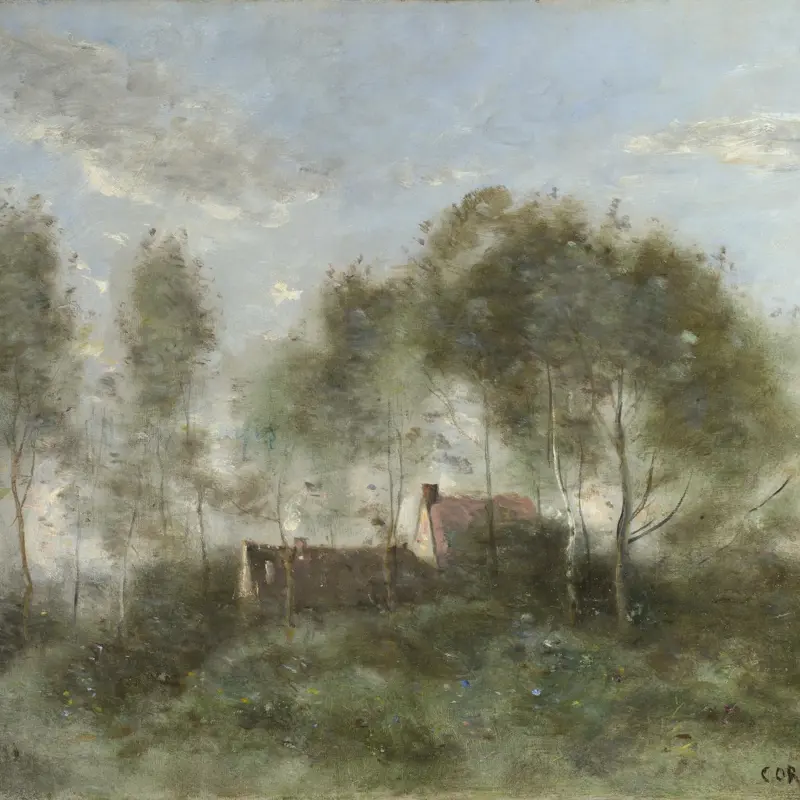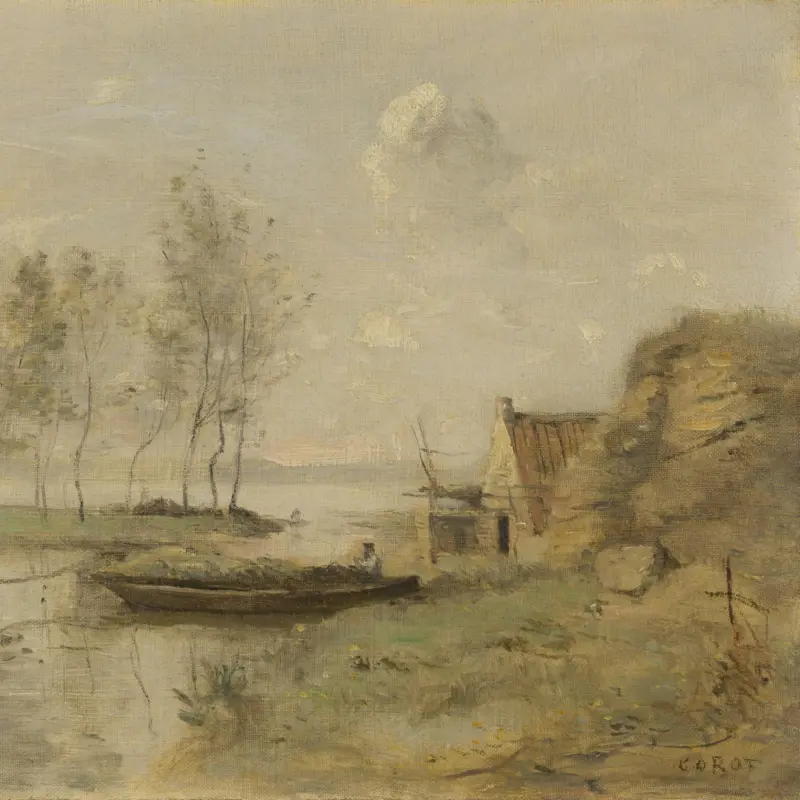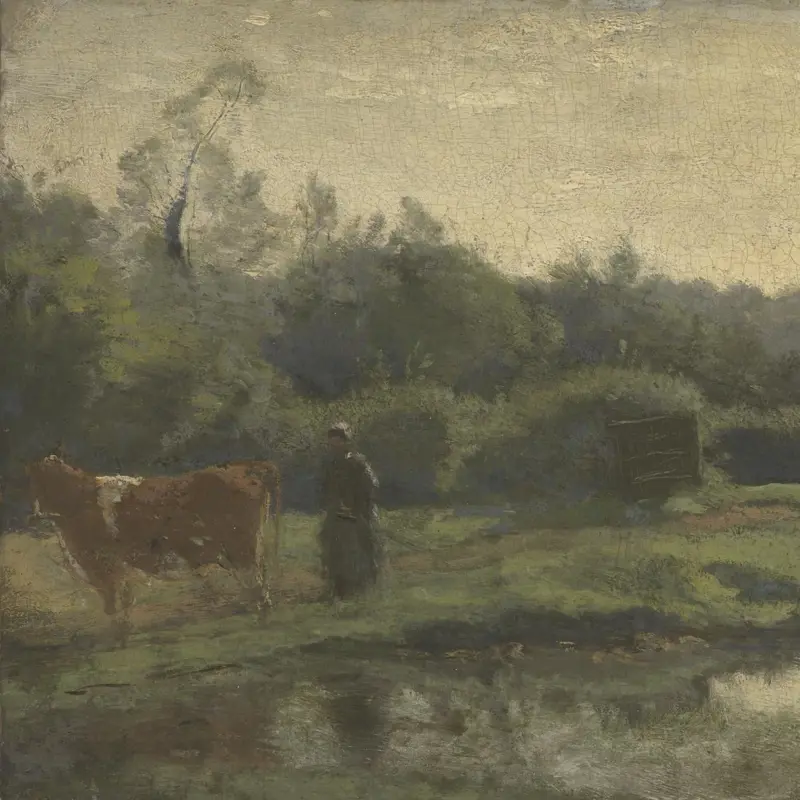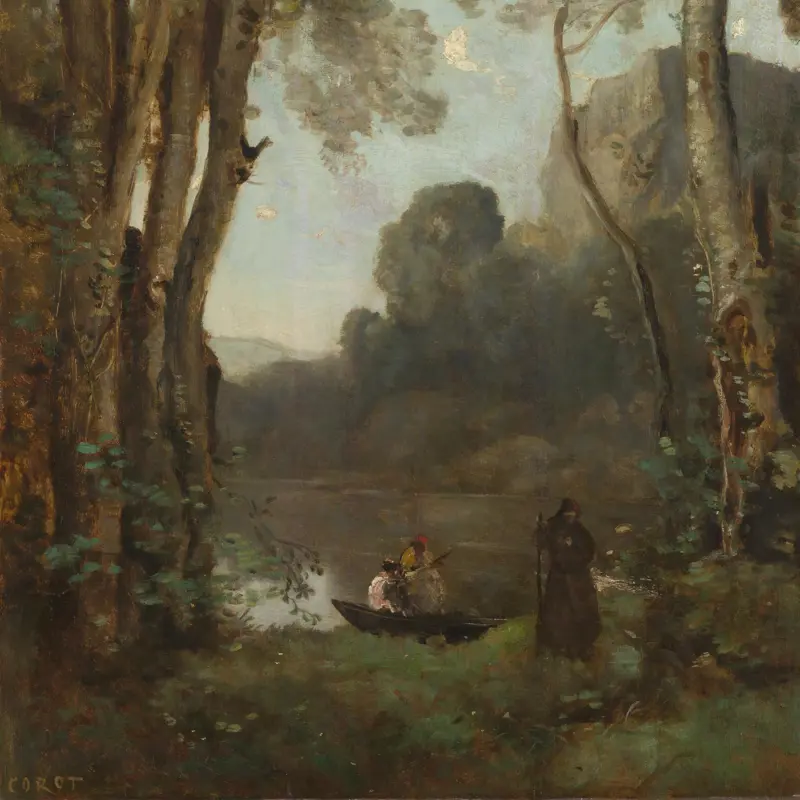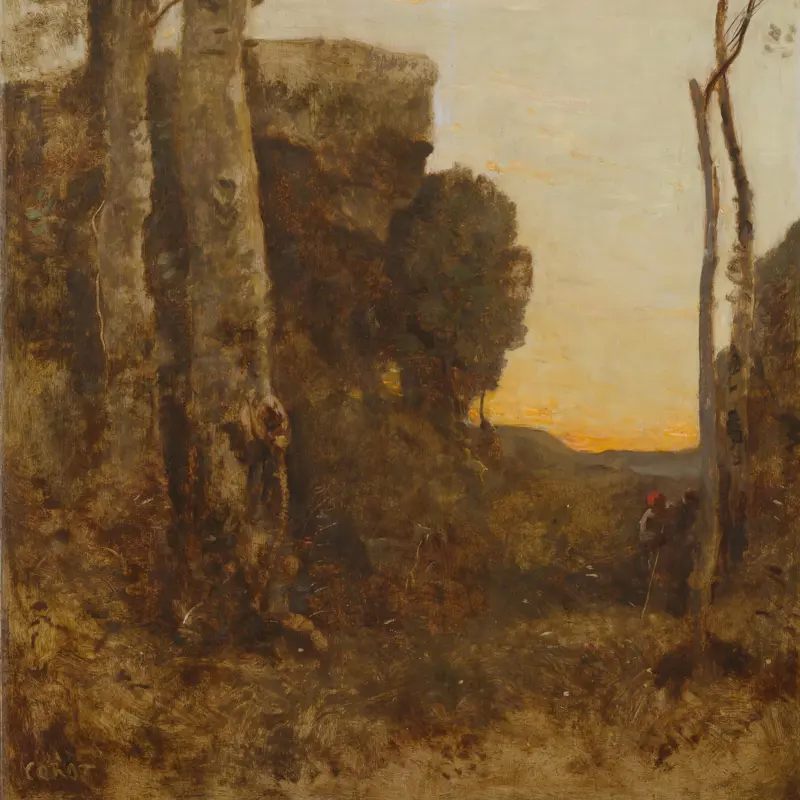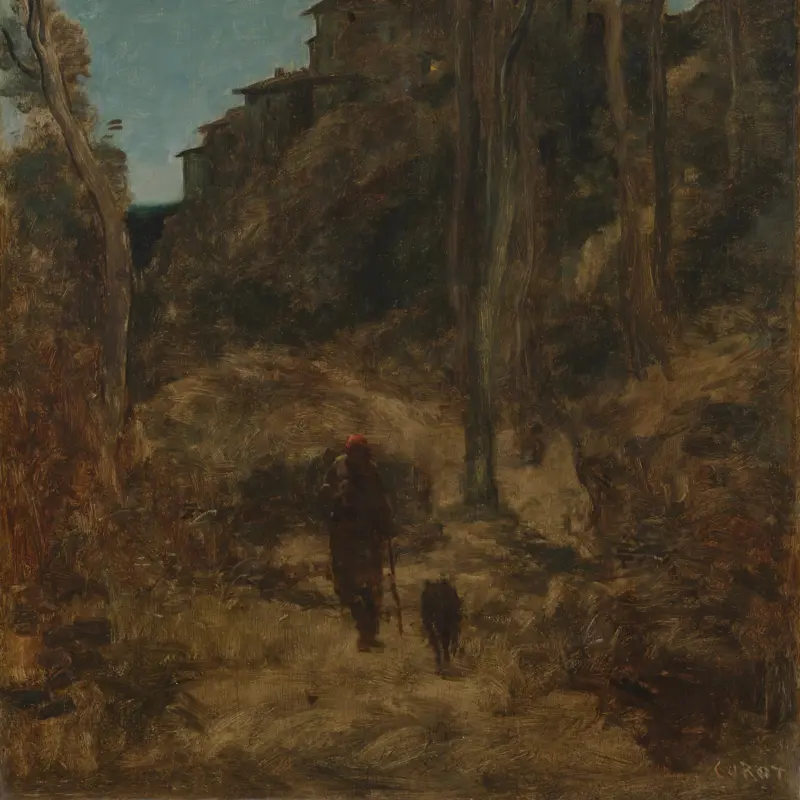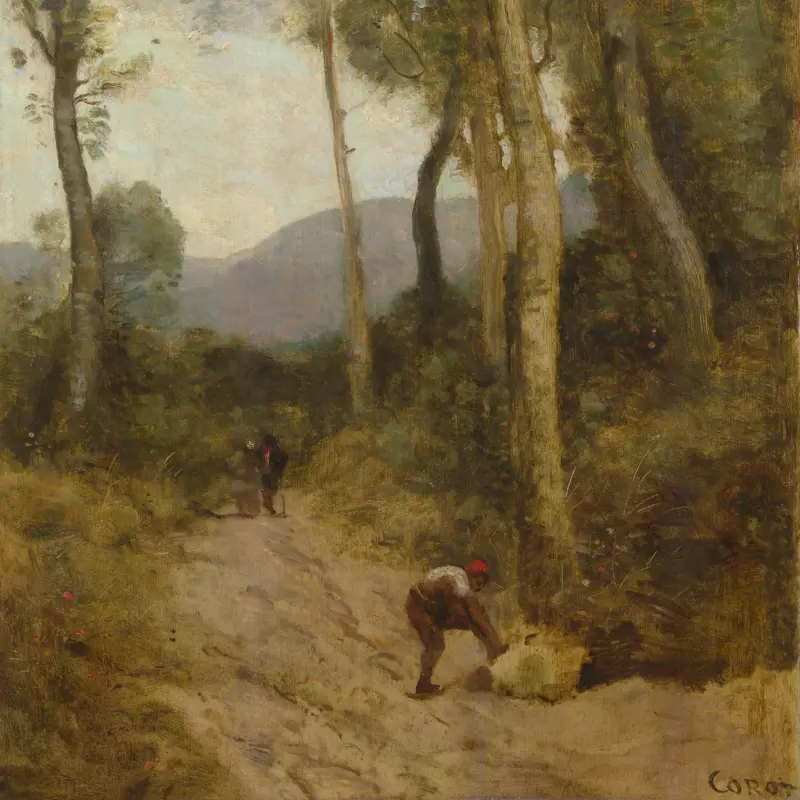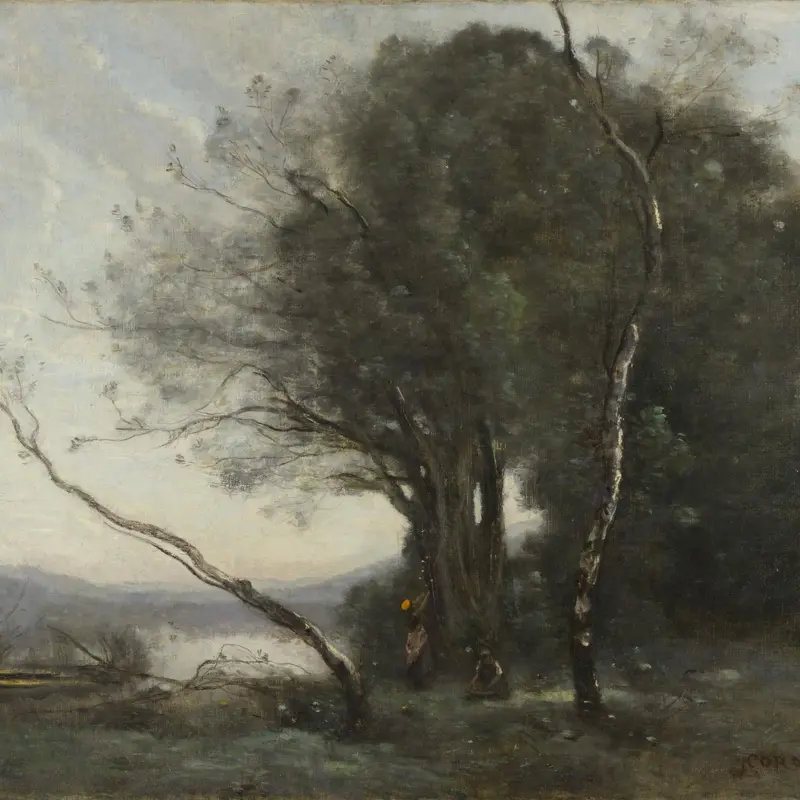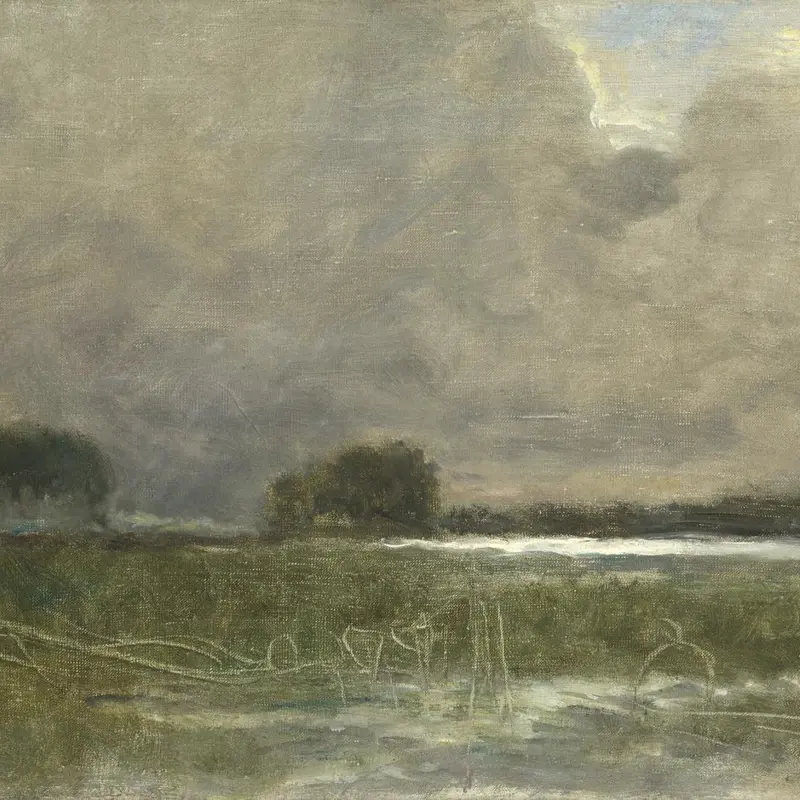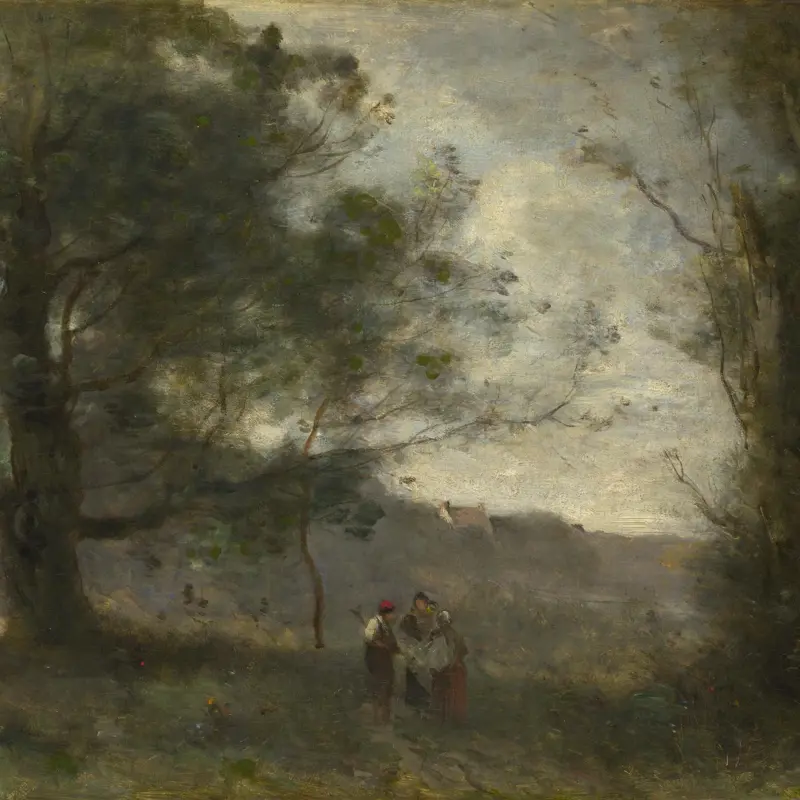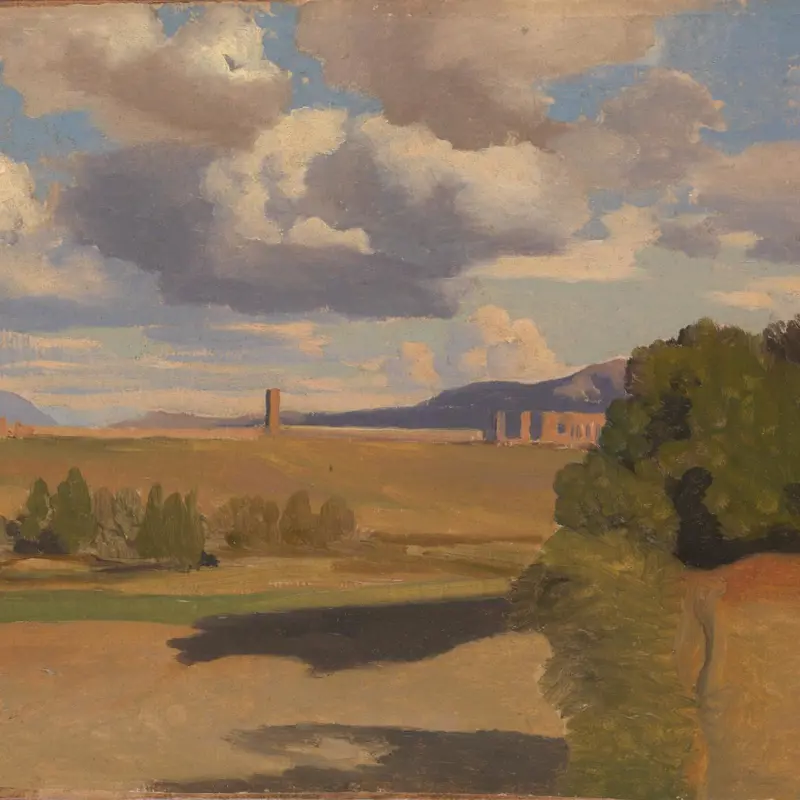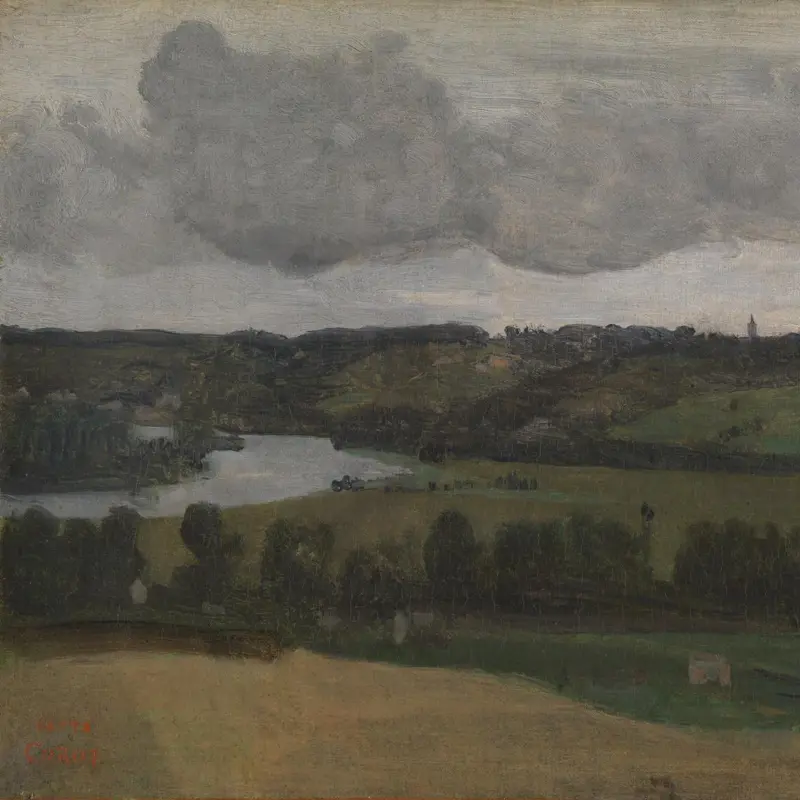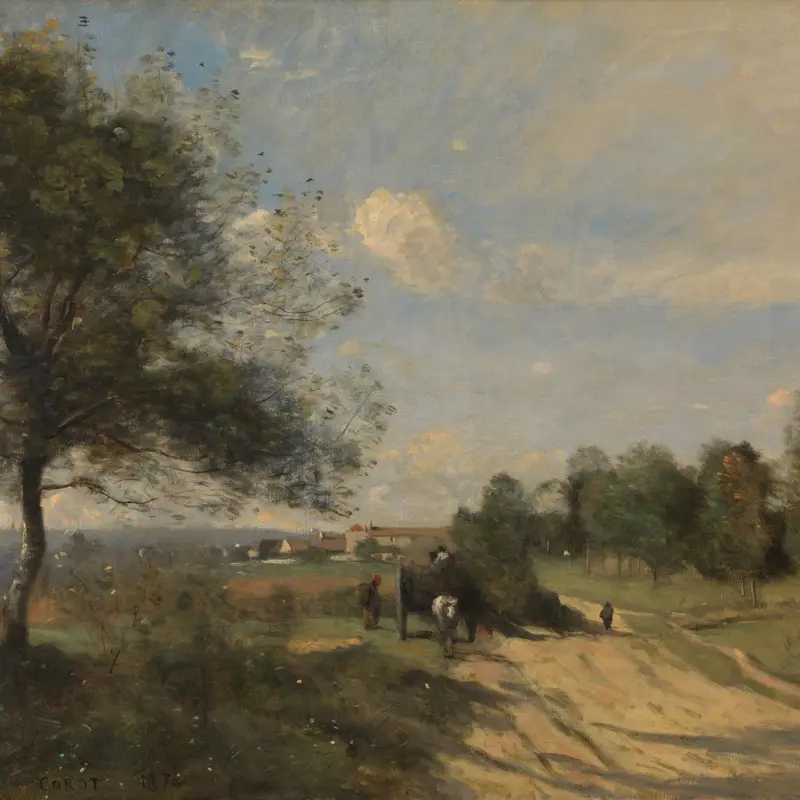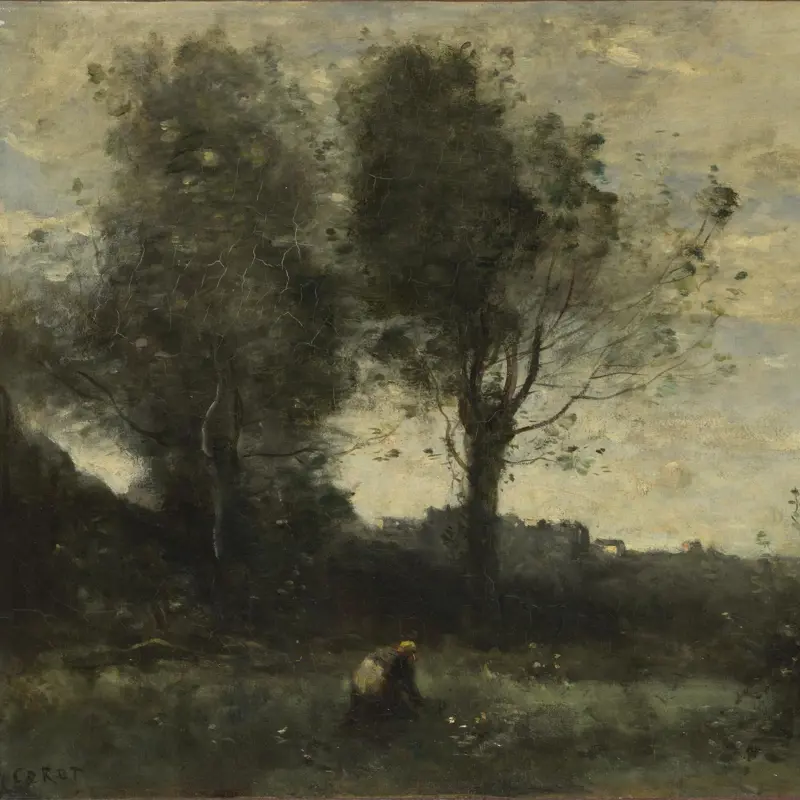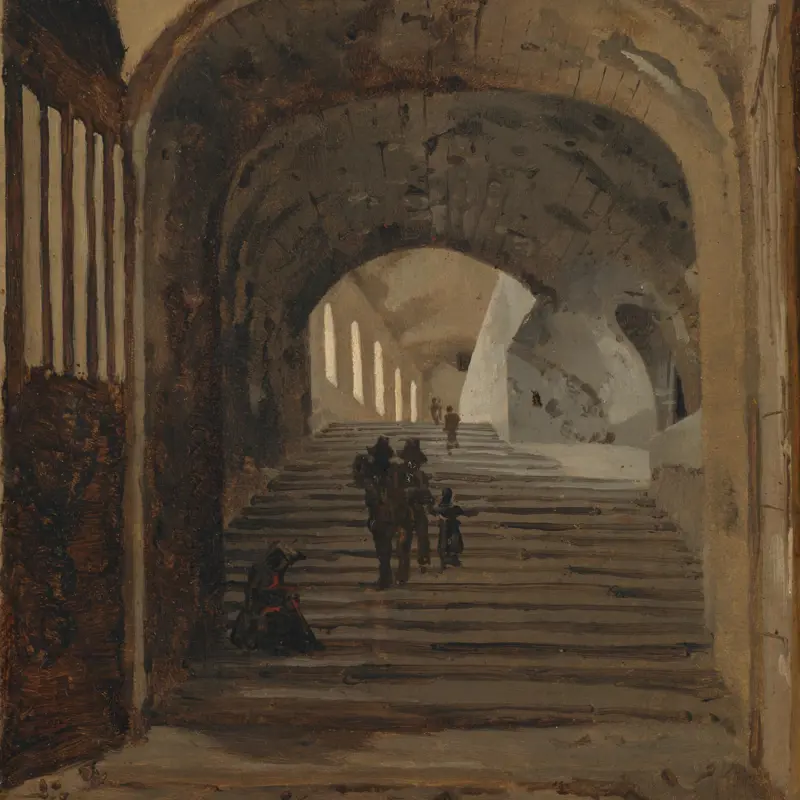Imitator of Jean-Baptiste-Camille Corot, 'A Peasant Woman', before 1913
About the work
Overview
In this pensive study, a woman is dressed in traditional Italian costume. Her distinctive headdress is a tovaglia, a piece of folded linen or other cloth worn flat on the head and covering the neck. With increased Italian migration to France from the middle of the nineteenth century, the subject of women wearing picturesque dress became popular among French artists, Corot included.
Although this painting entered the National Gallery’s collection as a work by Corot himself, it is now thought to be by an imitator. The restrained colours and thin application of paint contrast with Corot’s juxtapositions of bright colour in his own late portrayals of women. This work probably dates from the early years of the twentieth century, a period when the appeal of Corot’s late silvery landscapes was on the wane, and the demand for his late figure paintings was on the rise.
Key facts
Details
- Full title
- A Peasant Woman
- Artist
- Imitator of Jean-Baptiste-Camille Corot
- Artist dates
- 1796 - 1875
- Date made
- Before 1913
- Medium and support
- Oil on canvas
- Dimensions
- 31.8 × 29.2 cm
- Inscription summary
- Signed
- Acquisition credit
- Sir Hugh Lane Bequest, 1917, The National Gallery, London. In partnership with Hugh Lane Gallery, Dublin.
- Inventory number
- NG3239
- Location
- On loan: Long Loan to The Hugh Lane (2019 - 2031), Dublin City Gallery The Hugh Lane, Dublin, Ireland
- Collection
- Main Collection
Provenance
Additional information
Text extracted from the ‘Provenance’ section of the catalogue entry in Sarah Herring, ‘National Gallery Catalogues: The Nineteenth Century French Paintings’, vol. 1, ‘The Barbizon School’, London 2019; for further information, see the full catalogue entry.
Exhibition history
-
2006Long Loan to The Hugh Lane (2006 - 2019)Dublin City Gallery The Hugh Lane31 December 2006 - 18 April 2021
-
2021Long Loan to The Hugh Lane (2019 - 2031)Dublin City Gallery The Hugh Lane24 February 2021 - 23 February 2031
Bibliography
-
1932T. Bodkin, Hugh Lane and his Pictures, Dublin 1932
-
1957Martin Davies, National Gallery Catalogues: French School, 2nd edn (revised), London 1957
-
1970Davies, Martin, and Cecil Gould, National Gallery Catalogues: French School: Early 19th Century, Impressionists, Post-Impressionists etc., London 1970
-
1996V. Pomarède, 'Corot Forgeries: Is the Artist Responsible?', in Corot, New York 1996, pp. 383-96
-
1997Paris, Cabinet des Estampes, Bibliothèque Nationale: Corot: A. Robaut, Tableaux Faux, 1997
-
2001
C. Baker and T. Henry, The National Gallery: Complete Illustrated Catalogue, London 2001
-
2019Herring, Sarah, National Gallery Catalogues: The Nineteenth Century French Paintings, 1, The Barbizon School, London 2019
About this record
If you know more about this work or have spotted an error, please contact us. Please note that exhibition histories are listed from 2009 onwards. Bibliographies may not be complete; more comprehensive information is available in the National Gallery Library.

